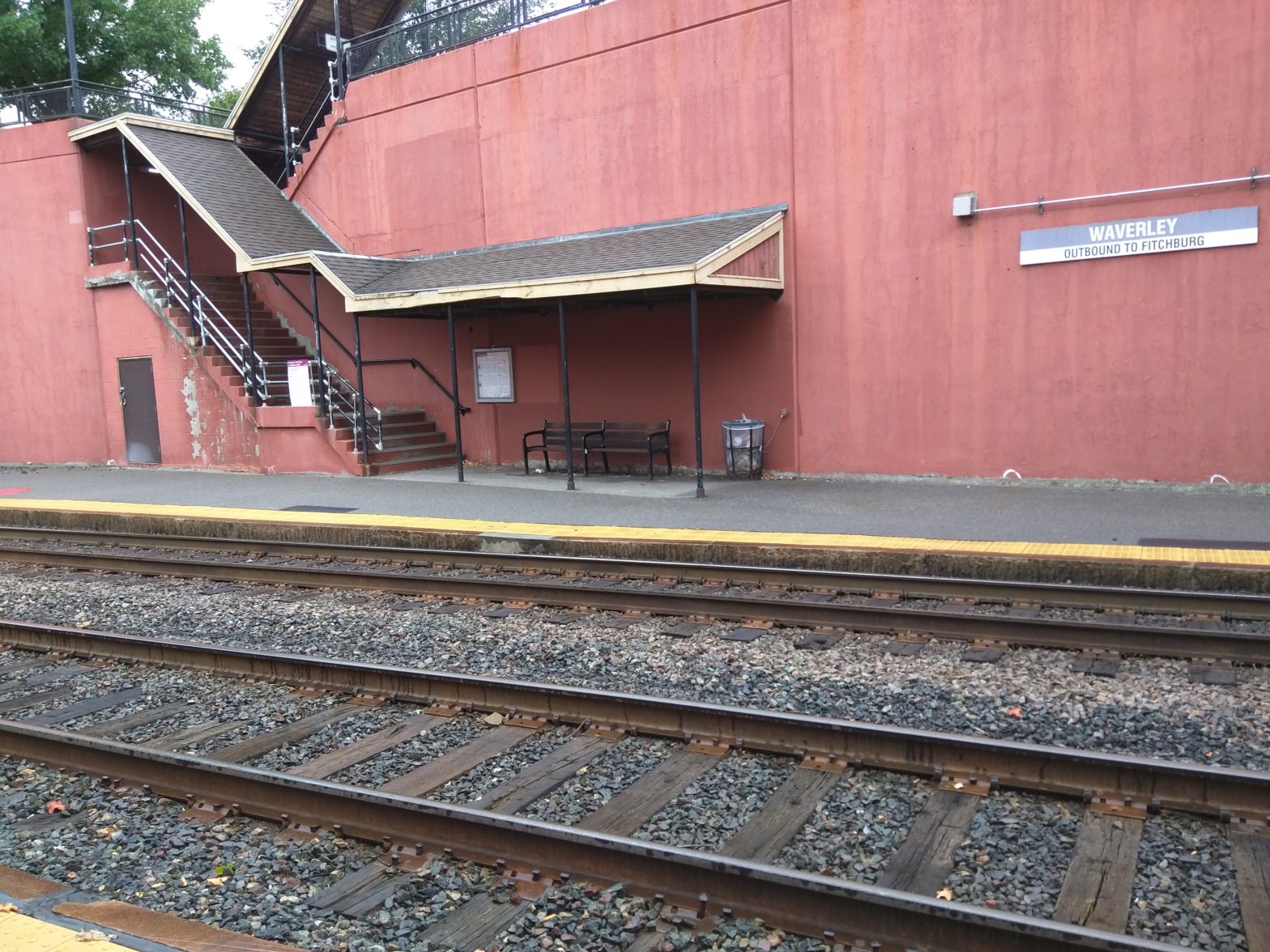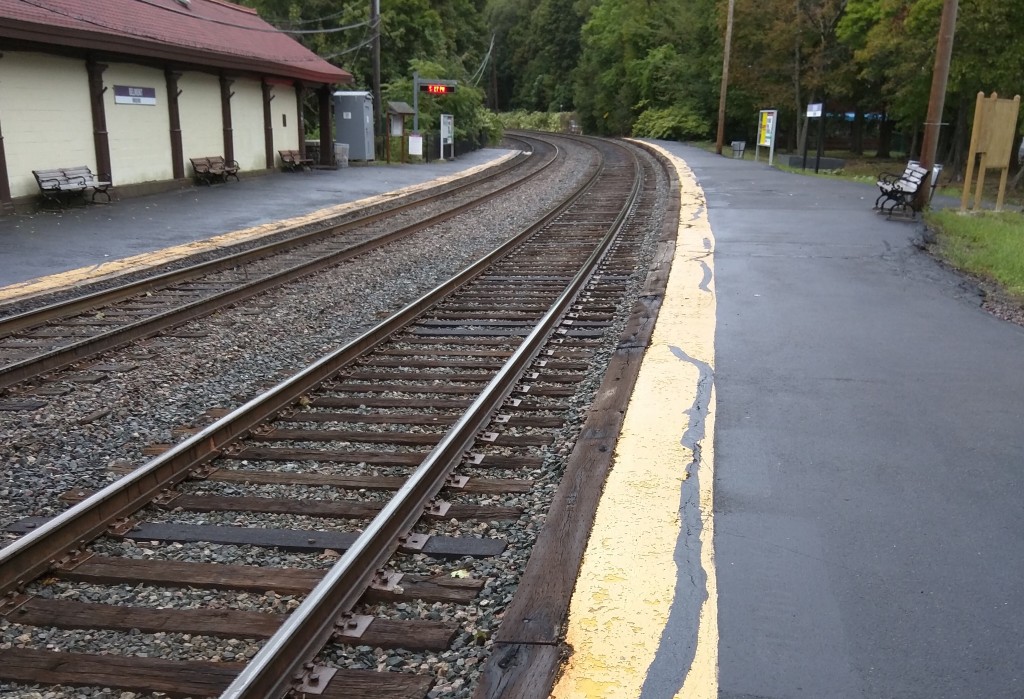Among its many challenges, the MBTA faces a long term moral and legal obligation to make its stations accessible to people with disabilities.
Recently, MBTA management drew to my attention that the state Architectural Access Board has ordered the MBTA to improve access to the Waverley Square commuter rail station. This is an order which may have important implications for Belmont neighborhoods.
Under state disability access law, structures can remain inaccessible indefinitely, but if an owner improves a public facility substantially then they need to make it accessible. The AAB has determined that recent improvements to Waverley station trigger an obligation to make the station accessible. This determination occurred over two years ago and the MBTA was originally obligated to fix the problem by January 1, 2015.
The commuter rail station in Belmont Center is also very inaccessible, but has not been improved or repaired to the degree which would trigger an accessibility obligation. Eventually, as the platform in Belmont Center continues to deteriorate, the MBTA expects to need to make investments that would require an accessibility upgrade. However, it is difficult to make the Belmont Center station accessible because it is on a curve. When straight train cars stop at a curved platform it creates a dangerous gap between the platform and the door and limits accessibility.
The costs of making the existing Waverley station accessible are high — estimated at roughly $35 million — because the station is below grade. It would cost roughly the same to build an entirely new accessible station at a point along Pleasant Street between Belmont Center and Waverley Square where the tracks are both straight and close to the surrounding grade. A new station could include parking and could also be combined with development along Pleasant Street.
Twenty years ago, I chaired the South Pleasant Street Land Use Committee. We considered the possibility of a new single station to replace the two existing Belmont stations. We recommended against it at that time. Of course, a single station would mean longer walks for many commuters. People were also concerned that a parking lot on Pleasant Street would be used primarily by out-of-town commuters, bringing more traffic to town. Additionally, to keep the station within easy walking distance of many Belmont neighborhoods, some kind of pedestrian overpass would be needed. An overpass would bring more foot traffic and probably drop-off vehicular traffic to the neighborhoods off Waverley street between the town field and the town yard — neighborhoods who already feel pressured by traffic from the town yard.
Now, however, we have to contemplate the possibility that we may eventually need to close at least one of our commuter rail stations. We need to go through a transparent and public process to examine all the potential options.
The MBTA faces an imminent legal obligation to set a plan in motion and will be scheduling a meeting with the Belmont Board of Selectmen to discuss the challenges and options in greater detail and to design an appropriate public process for decision-making.
Representative Rogers and I are committed to assuring that the MBTA moves in a deliberate and transparent way on this issue and we look forward to working with the Board of Selectmen and with all concerned.
Summary of meeting with Board of Selectmen on September 28, 2015
The General Manager of the MBTA, Frank DePaola, appeared with his team and presented as follows:
- Waverley station needs to be upgraded to be accessible by persons with disabilities.
- The MBTA is behind schedule on an order to so issued by the Architectural Access Board.
- The range of possible costs is $15 to $30 million.
- The costs at Waverley are driven by the need to keep retaining walls in place to support the deep cut to reach the tracks below grade.
- The low cost solution involves access compromises which may not be acceptable to the Architectural Access Board.
- The MBTA has tried to persuade the AAB that alternative access investments elsewhere in the system might make more sense, but the AAB appears committed to forcing an upgrade of Waverley.
- The Belmont Center station will need accessibility upgrades at some point in the future and these may be costly because Belmont Center is above grade. However, no engineering study has been made of this site yet.
- The GM did not present any alternative locations, but did explain that building a station in a straight region of the tracks where the tracks are closer to the surrounding grade could be much less expensive — Pleasant Street offers some locations meeting those criteria.
- The MBTA hopes to make a decision as to which approach to take by the end of the year.
View the MBTA presentation slides here.
The Board of Selectmen expressed a clear preference for keeping both Belmont stations open. In the short run, that means fixing Waverley. The Selectmen were clear in their preference that Waverley be fixed and discouraged the MBTA from continuing exploration of any other sites.
The next step will be a “design charrette” — a public conversation in more depth about the options — that the MBTA will organize in consultation with Selectman Paolillo and Representative Rogers and me. There may be some pre-conversations involving other Belmont boards in preparation for that meeting.


